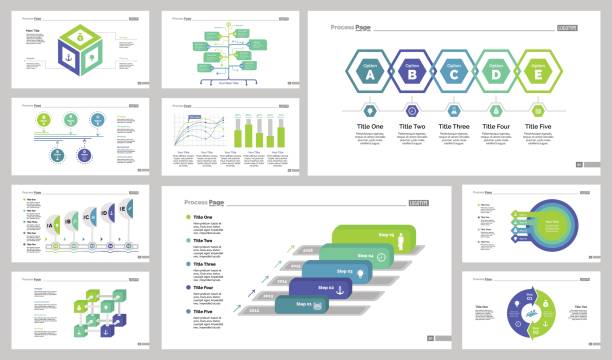
Why marketing should lead your digital transformation in 2023 and how to do it
All marketers strive to improve the customer experience. A consumer or prospect’s expertise can make or break a company. It is the key to driving revenue, conversions, and customer loyalty.
According to research published in “The Marketing Evolution: Leading, Transformation, Skills, and Challenges, & the Future,” 71% of senior and 61% of mid-level marketers are responsible for digitalization in their organization.
“The 2021 Status of Digital Transformation” revealed that despite this, only 23% CMOs are co-owners of digital transformation. It is more likely to take the lead.
This is different, as marketing leaders are better positioned to be more active. This blog will explore the skills, knowledge, and tools that allow marketing to accelerate your digital transformation strategy.
Why is it that marketing leaders are best placed to lead the way?
A marketing team’s role is to educate, influence and convert. This requires unique skills and a deep understanding of the business and customer.
Marketing leaders can create a strategy for digital transformation by taking a step back to see the big picture. They can also create a vision showing where the company stands and wants to be.
Digital transformation is not just for marketing but also across all business functions. The entire customer lifecycle should be at the forefront of the mind.
Know your customer
A marketer needs to stay on top of trends and new developments. It is essential to consider not only the technology but also the needs and behavior of customers. Businesses must plan scenarios and future-proof their business.
Customer Experience is essential. The customer is becoming more demanding. They want a multichannel approach that ensures every touchpoint within a business has a consistent and seamless experience.
If a customer clicks a post on social media to learn more about a product, ensure that your next point of contact is relevant to the product (custom landing page, for example) and on-brand, or you’ll lose their attention immediately.
Understanding your data
Data is the foundation of marketing leaders. They can make better decisions based on the data, whether it’s about the performance of an ad campaign or conversion rates.
You can have a lot of data, but getting insights for your business requires a specific skill. Your business needs data that will drive performance, revenue, and leads. Marketing teams can assist you with this.
To develop a strategy for digital transformation, you need to understand your business data and the ecosystem. Are you aware of what your competitors do? What’s the future of your industry?
Forecasting and market research are essential parts of the CMO’s role. It is evaluating the external environment and understanding where a company fits in. It helps improve areas where they matter and brings attention to places in the business that are underdeveloped or underresourced.
Soft skills
In today’s market, technical knowledge and skills are crucial. But that’s only part of the picture.
Soft skills are also necessary. These include personality traits, work habits, and behaviors. They also help create diverse, agile teams – which is essential for digital transformation.
‘The Future of Work: 2022 Global Report’ found that the top skills in demand with employers cited soft skills such as dependability, flexibility, problem-solving, and teamwork/collaboration. Soft skills also include innovation, creativity, and persuasion.
Soft Skills: The Future of Work
These skills foster collaboration, and they help people have long-lasting careers. This, in turn, leads to the success of a business.
To ensure your team has the necessary knowledge, read ‘9 essential soft skills for digital marketers’.
Agile marketing is a must-have for marketers.
Agility is crucial in digital transformation. It allows companies to react to external and internal changes. This ability to pivot rapidly will help maintain or improve customer engagement and drive harmony within a workforce by creating productive and engaged employees.
Marketing leaders and their teams must adopt an agile approach. What does this mean?
Enterprise agility is about more than product or software delivery. It’s also about your company’s structure, operations, and behaviors. It is about creating deep connections, a flexible approach, and a clear direction (see the example below from Riverflex).
Enterprise agility
It is essential to focus not only on your customers but also on the talent that you already have. This is about improving skills and knowledge with Agile Thinking and continuous learning.
It’s ultimately a holistic, integrated view of the entire business environment. Everyone is working toward a common goal while being ready to adapt as needed.
Download the report ‘Perpetual Evolution – The Interplay of Talent and Technology in the Future of Marketing’ to hear opinions from leading industry experts.
How can you bring about transformation?
Leading and embracing change can be challenging. In today’s rapidly changing environment, there is no other choice. The pandemic has shown us how quickly and without warning the external environment can change. You can react to these changes that will determine whether you succeed.
According to Jacob Espinoza, a former Fortune 500 consultant who is now a Non-Profit director, some of the biggest problems that leaders face when implementing change are:
Listen to This is about listening to both your employees and customers. Engage customers in surveys or focus groups and take an interest in their feedback, such as through reviews or phone calls. Create a feedback culture for your employees and have regular meetings.
Evaluate. – Concentrate on your business objectives and refer to your Key Performance Indicators. Use the data that you already have to determine where the most significant changes can be made. Let marketers make decisions based on the data they already have.
Implement: Prepare your team and inform them about the changes. Each team member must know what is coming, when, and what they are expected to do. It could be as simple as providing training and being available to talk about the “why” to move forward.
Implement This refers to how you implement what has been decided and follow up with your team. At this point, you should coach and fill in any gaps. You can also communicate your expectations and acknowledge early adopters.
Repeat: Be committed to your changes and bring your team along. Repeat these steps after you have made a change. Change can be difficult, but it’s worth it.



